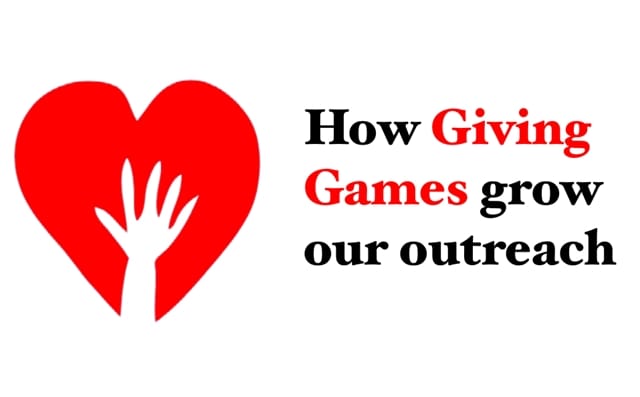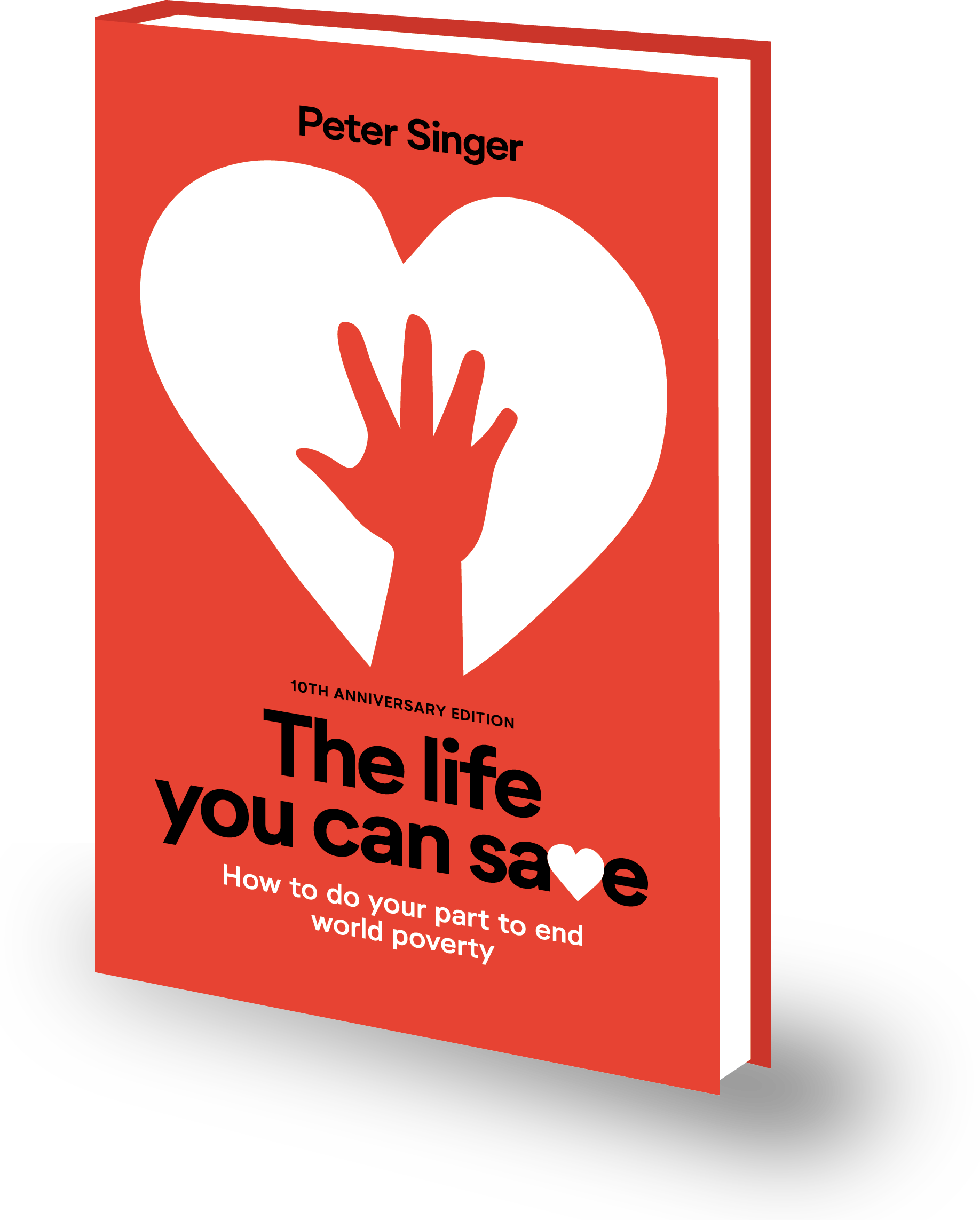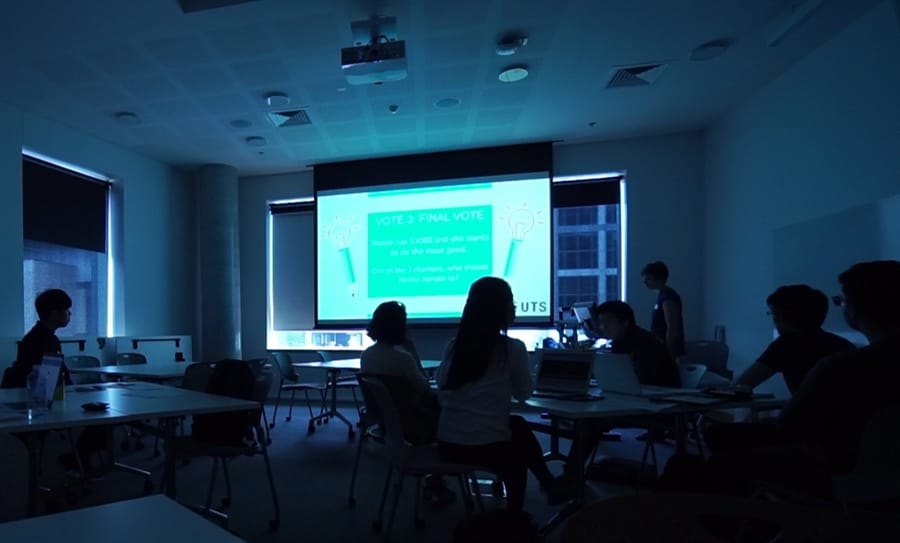The first Giving Game took place at Princeton University about three years ago. By the time the academic year wraps up this spring, more than 5,000 students will have participated in Giving Games at over 40 colleges and universities around the world.[1] This post will address the growth prospects for Giving Games.[2]
Every Giving Game provides a new model for outreach
Expanding to new schools has actually been the simple part. Once a teacher or student group has facilitated a Giving Game at one place, it’s easy for others to copy that model at a new location. As we run more Giving Games, we’re developing a broader set of “templates”—so prospective facilitators are more likely to find a template that fits their needs.
Giving Games help us build lasting relationships
Once we make inroads at a new school, the work has just begun. Running a single Giving Game is nice, but that’s not our ultimate goal. We’re looking to develop relationships that will enable us to provide philanthropy education in a lasting manner that will enable us to grow our outreach capacities for years to come.
That’s not always possible. For example, we’re no longer in touch with anyone at six schools that have hosted Giving Games in the past. But we’re still in contact with the vast majority of the colleges where we’ve run Giving Games. We’ve run multiple Giving Games at almost 20 schools, and have plans to run additional Giving Games at many of the schools that have so far only run one.
We plan to scale Giving Games for campus-wide outreach
So each school offers an enormous opportunity for growth. A typical Giving Game will only engage a tiny fraction of the student body, and new students arrive every year. Eventually, we’d like to make Giving Games a part of campus-wide programs such as residential life, core curricula, and new student orientation.
Our growth at colleges shows no signs of slowing. We’re only scratching the surface in both the breadth of the schools we’re operating at and the depth of our work at each school.[3]
Giving Games beyond colleges and universities
We’ll apply the same growth model we’ve used across campuses worldwide as we continue to bring new Giving Games to potential donors beyond colleges and universities. Over the last year alone we’ve started running Giving Games in partnership with businesses,[4] high schools, church groups, and book clubs.
We also have significant room to expand our online Giving Games. We recently launched our most compelling online Giving Game to date: Peter Singer is letting the public choose where to donate $10,000 in proceeds from his new book The Most Good You Can Do. Vote now to support one of 16 highly effective charities!
Later this year we plan to release another online Giving Game, utilizing methods and templates that have received consistently positive feedback.
Word of mouth helps promote new Giving Games
In the early days, we grew our Giving Game program by spending lots of time reaching out to people, explaining the model, and trying to convince them to run one. We’d do more of that if we had the time, but fortunately these activities are no longer critical for our growth. Giving Games are now spreading through word of mouth.
Instead of us reaching out to people, people now reach out to us. New effective altruism groups are starting up all over the world (both school-based and regional groups). Group leaders spread the word to potential new founders about their positive experiences with Giving Games. Similarly, teachers are spreading the word to their colleagues. We expect these trends to continue as interest in effective altruism continues to grow.
Giving Games have now become a brand name, at least within certain communities. And I can’t emphasize enough how important that has been. Our first Giving Game at a business was a result of someone emailing us out of the blue. The same was true for our second business, and our first church groups and book clubs. We didn’t even learn about the first high school Giving Game until after the fact: A high school teacher participated in a Giving Game as part of a MOOC and took it upon herself to share the experience with her students by hosting her own Giving Game.
This development has made a huge difference. Cold calling corporations and asking them to run a Giving Game with their employees is hard. Helping someone who comes to you with an idea to run a Giving Game with his or her colleagues is easy.
Prospects for growth going forward
Looking forward, we’re extremely optimistic about our prospects for continuing to grow Giving Games at a fast rate. We’re just getting started in most of our opportunity “markets.” Even in our most advanced market, we’re nowhere near saturation. There are thousands of colleges in the U.S. alone, but we’ve only run Giving Games at 40 schools worldwide. The improvements we’re making to our training resources will make it easier for people to run Giving Games, and to do so more effectively.
The cost-structure of Giving Games also poses no fundamental obstacle to growth. In a Giving Game, the donation money serves two purposes. It allows the participants to make a real donation, therefore making the learning experience more tangible. But even more importantly, the money incentivizes people to participate in the first place. Donating someone else’s money is an attractive proposition, and costs nothing to the participants themselves. So we expect to see continued demand for this opportunity as long as we can continue to offer it. The cost to attract a participant is quite reasonable, usually in the $5-25 range. Even better, donors can sponsor Giving Games without donating incremental money, so the true cost is much lower.
Growing Giving Games to the point where they can have a meaningful impact on the culture of how philanthropy is conducted will be no easy task, but the potential benefits are enormous. We’ll be working hard to make sure our growth trajectory is as steep as we can make it.
[1] We’ve also reached people at many more schools through Giving Games through forums like MOOCs, the UNCF National Alumni/Pre-Alumni Convention, and the Sydney Global Health Conference.
[2] We measure our growth on an academic year basis, so we’ll publish a full set of statistics on our program when the school year concludes this summer. Looking at preliminary numbers for our key metrics, we project that this year’s Giving Games will have roughly doubled in outreach capacity relative to the previous year.
[3] Another example of added depth is the ability to create more immersive Giving Games. While Giving Games typically last around an hour, we’ve started running some Games that are spread across multiple sessions over the course of a few weeks. In one case, a Giving Game was a central and ongoing part of a semester-long course.
[4] Businesses with multiple branch offices offer another opportunity to scale. We’re currently pursuing this with a large international consulting company that has already run a pilot Giving Game at one office.



